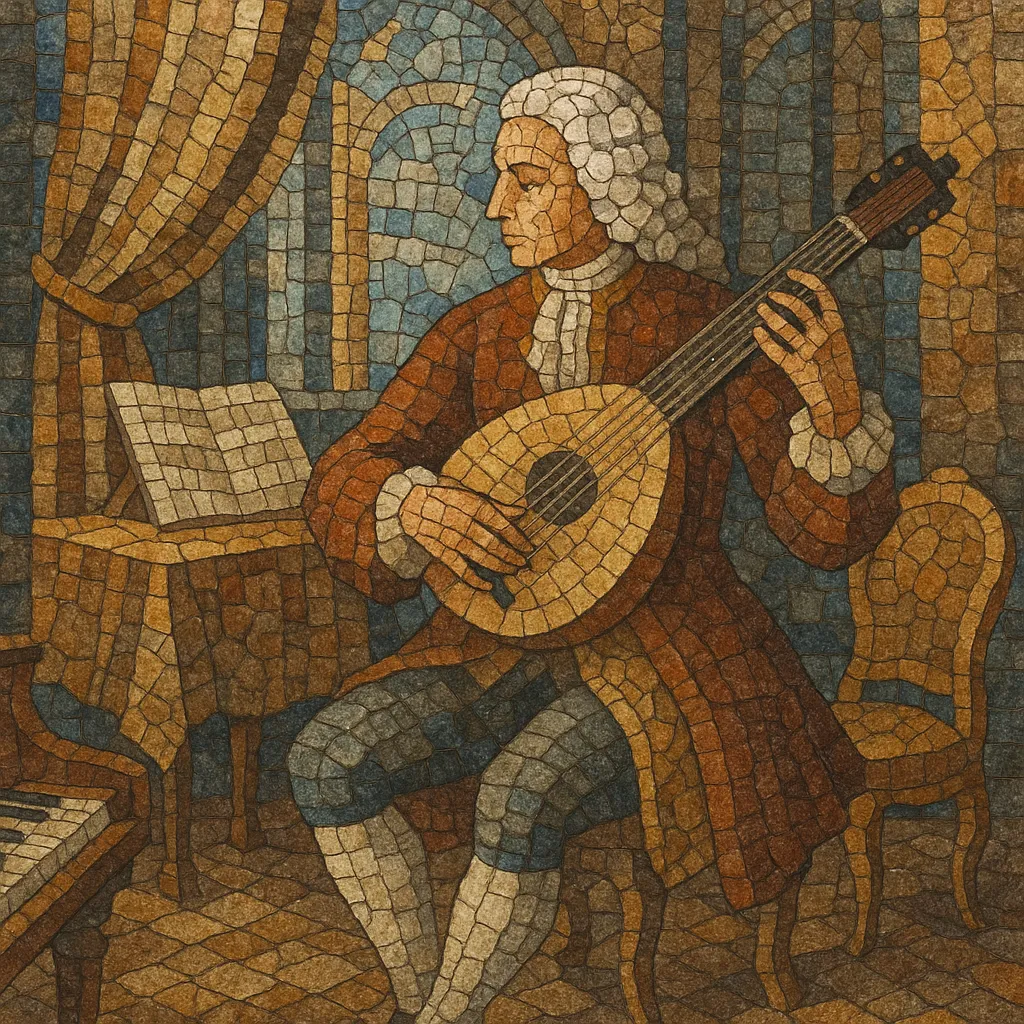The baroque suite is a multi-movement instrumental genre from the Baroque era built from a sequence of stylized dances unified by key and often contrasted by tempo and character. Typically, a core group of dances—Allemande, Courante (or Corrente), Sarabande, and Gigue—forms the backbone, with optional insertions such as Minuet, Gavotte, Bourrée, Passepied, Rigaudon, or Air.
Each movement commonly uses binary form with repeated sections (||: A :|| ||: B :||), in which the first part modulates away from the tonic and the second part returns, often with balanced phrasing and motivic recall. Ornamentation (agréments), rhythmic inégalité in French movements, and clear dance rhythms are hallmarks. Suites were composed for keyboard (harpsichord, organ), lute, chamber ensembles, and orchestra (as orchestral suites).
The suite grew out of Renaissance and courtly dance traditions, especially in France, Spain, England, and the German-speaking lands. Early instrumental dance collections were organized by key or function and gradually coalesced into ordered sets. In Germany, composers like Johann Hermann Schein (Banchetto musicale, 1617) and especially Johann Jakob Froberger helped crystallize the four-dance nucleus (Allemande–Courante–Sarabande–Gigue), synthesizing French elegance and Italian vitality.
Throughout the mid-1600s, the suite became a standard instrumental cycle across Europe. French clavecinistes (Louis and François Couperin) cultivated richly ornamented keyboard suites (ordres), while English composers (Henry Purcell) and German organists (Dieterich Buxtehude, Johann Pachelbel) adapted the format to their idioms. Italian influence contributed quicker corrente types and virtuosic figuration, while French overture styles occasionally prefaced suites in grand ceremonial contexts.
In the early 18th century, Georg Philipp Telemann, George Frideric Handel, and Johann Sebastian Bach produced monumental contributions. Bach’s English and French Suites, Partitas, and Cello Suites display polyphonic writing, expressive sarabandes, and lively gigues, marrying contrapuntal craft with dance rhythms. Orchestral suites (overtures) expanded the medium to festive settings, using winds, trumpets, and drums for public ceremonies and courts.
By the later 18th century, the suite gradually yielded to sonata and symphonic cycles, yet its movements—especially the minuet and later the gavotte—were absorbed into Classical forms. The suite’s ordered contrast of character pieces, binary formal thinking, and dance-derived rhetoric left a lasting imprint on orchestral and chamber writing and later inspired neoclassical revivals and stylistic borrowings in modern popular genres.


